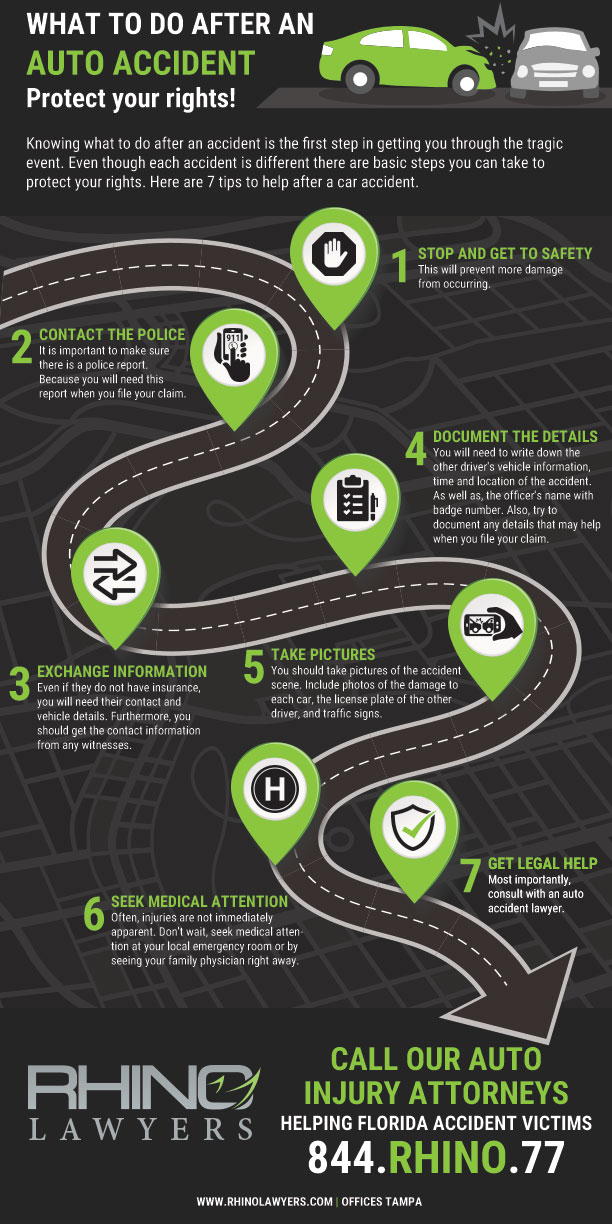Did you know that Florida tends to rank as the third-highest state in the US for traffic accident fatalities? What are the most common types of car accidents in Florida, and how can you avoid them?
Read this guide to find out about common car accidents, what injuries often occur, and what to do in each case.
Most Common Types of Car Accidents
The most common types of car accidents in Florida are rear-end collisions. Other common accidents are T-bone or side collisions, head-on collisions, sideswipe crashes, and single-vehicle crashes.
Another more rare type of accident is a multi-car collision. These often take place on long stretches of highway such as I-75. As well as, in areas where there are hazardous fog or other low-visibility conditions.
We’re going to go through each of these kinds of accidents and what injuries you might expect. Then cover how to prevent these accidents from happening to you.
Rear-End Collisions
Rear-end collisions are the most common car accident that we see in Florida. These accidents are often caused by either distracted driving or tailgating (when drivers stick too close to the car in front of them).
When either of these things happens, and the car in front must stop suddenly due to a traffic light or an obstacle, the car that is too close behind them or the driver who is not paying attention crashes into the back of the car in front of them.
The most common injury that occurs in these accidents is whiplash, where the front car’s driver’s neck moves back and forth rapidly. This can lead to painful complications if not treated.
You can prevent a rear-end collision by driving the recommended following distance behind other cars, driving distraction-free, and if someone is tailgating you, move to the side to allow them to pass.
T-Bone and Left-Turn Collisions
In T-bone collisions, the front of the car impacts the driver or passenger side of the other car, which, for the side-impacted car, can be very dangerous or fatal. The car door can buckle in and trap the driver or passenger inside.
If the driver had their hands on the wheel, their arms might break from the impact of the other car. And if that car was going fast enough, the car might roll, or push the car hard enough to crush the driver.
These types of accidents happen most often at intersections where one car is turning left and the other is going straight through. Or where one car is going east-west while the other goes north-south, and they meet in the middle. This would only happen if one of the cars was running a red light, so it can be easier to avoid.
Left-turn collisions are more common and very dangerous for passengers. To avoid these, make sure that you have a green arrow and that you check twice for other cars coming straight through the intersection before you turn.
Head-On Collisions
These collisions are more deadly but less common than some other types of accidents. To collide with a car head-on, you or the other car would have to drive the wrong way on a road.
This can happen when you are passing another car on a two-lane road. Otherwise, this only happens in the case of drunk or distracted driving. Distracted drivers can come out of their lane, impacting a car coming in the opposite direction.
In this case, more so than others, you must wear a seat belt. If you don’t, the force of the impact can throw you through the windshield of your car and into the windshield of the other car. Your arms or body could be crushed by your steering wheel, your head could hit the dashboard, and all kinds of other injuries could occur.
Sideswipe Crashes
These accidents tend to happen on larger highways or interstates where cars need to merge and change lanes. This type of car accident has one car slide along or hit against the side of another car.
These can do a lot of aesthetic damage to the car, including breaking the mirrors or creating a lot of scratches along the side. If the impact is at a certain angle or a high enough speed, the passengers could get hurt, or the car could turn out into another lane of traffic, and there’s a possibility of a secondary collision.
To avoid these crashes, make sure to check all your blind spots whenever you are merging or changing lanes, especially on a busy interstate highway. If you are close to an on-ramp for the highway and you see another car trying to merge, move to the middle lane if it is safe to let them in.
Single-Vehicle Crashes
These types of crashes involve one vehicle impacting an object such as a traffic light pole, guard rail, or tree. Sometimes another car is indirectly involved, such as if the driver had to swerve to avoid hitting the car and impacted the object instead.
If this happens to you, try to swerve delicately around the other car and avoid harsh turns, as this can flip your car. But, if you have to impact something, try to hit the brakes and go to the bushes, rather than solid objects such as trees, rails, or poles.
If you hit a solid object, your car comes to an immediate stop, and all the force of the impact is on the car and you, instead of slowing down over time. Injuries you could see include crushed rib cages, head trauma, and worse.
What to Do if You Get In a Car Accident
If you get in a car accident, you should first check yourself and the other passengers of your car to see if you are in immediate danger, and escape the car if so. Tend to any wounds, and call an ambulance if needed.
Then, call the police to file a report, and call your lawyer while you get the insurance information from the other vehicle. In the case of distracted driving, see if you can gather proof that the other driver is at fault. Your car accident lawyer can help you investigate the situation to make sure you get the compensation you deserve.
In the case of a hit-and-run crash, try to get the license plate number of the car as they drive away, or at least a description of the car, and note the time and location of the crash. Call the police right away. For multi-vehicle crashes, get the information of every vehicle involved, just in case.
Your Car Accident Attorney
The most common types of car accidents in Florida are rear-end, sideswipe, head-on, and T-bone collisions. If you do get into a car accident, you should contact your attorney so you can get legal advice and help in the case of a personal injury.
Contact us today, and we can help you with your case, with a complete analysis to make sure you get honest and fair treatment.
CONTACT A TAMPA AUTO ACCIDENT ATTORNEY
In short, after a car accident, you may not know your rights. Above all, don’t struggle through the process alone. Actually, our personal injury team is here to help you with any legal needs you might have regarding your accident.
Lastly, let RHINO Lawyers answer your questions and review the facts of your case with a Free Consultation. So, get started by completing the “Free Instant Case Evaluation” or by calling us any time, day or night, at 844.329.3491.




